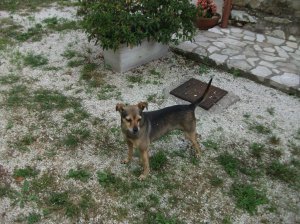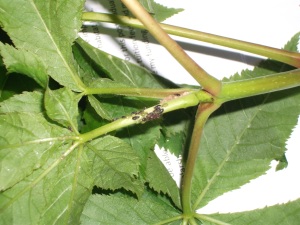As I am on my summer holiday this is one of my lazy blogs; mainly pictures, no science and written in the hope of inspiring more people to give up flying and take the train instead. For those of you who don’t know I try to keep my time in the air to a minimum; years go by without me encasing myself in those uncomfortable sardine tins with the disconcerting habit of dropping several hundred feet every now and then. Yes, you guessed it; I hate flying, both on a personal level and also on an ecological level. Thus for the last twenty-five years or so have taken our car with us on holiday, and when possible, kept the carbon footprint as small as possible by putting the car on the train. In the old days this was remarkably easy, as French MotorRail ran a great service from Calais, but unfortunately that was axed a few years ago and this now means we have the choice of either driving to Paris to catch the AutoTrain from Bercy or driving across to Den Bosch in The Netherlands to catch the Autoslaap Trein. You can actually travel pretty much anywhere in the world by train and ferry; The Man in Seat Sixty-One is our personal hero, do check him out.
We left Bracknell at 1715 on Thursday 17th July to catch the car ferry from Harwich to Hook of Holland. Due to the awful traffic around and in the vicinity of London, we didn’t arrive at Harwich until 2120 but despite that, got parked and into our cabin fairly quickly and in time for a late supper and glass of wine accompanied by a pretty good sunset as the ferry set sail.

We had a very comfortable night (unlike our experience going to Bilbao eight years ago) and after a quick breakfast were able to start on our journey from Hook of Holland to Den Bosch, a drive of just over an hour. I drove the car on to the train and as we were first there apart from some motorcyclists, was at the front end of the transporter carriages.
We then had a few hours of sight-seeing in Den Bosch in glorious sunshine before making our way back to the train and getting into our cabin, which came with hot and cold running water, two bunks and a complimentary glass of champagne courtesy of our stewardess.
We departed Den Bosch at 1315 and spent the next few hours travelling down through the Netherlands and on into Germany, much of it beside the Rhine which is very scenic at this time of the year.
At about 1745, we had a fifteen minute stop in Darmstadt, ostensibly to let us stretch our legs but as far as I could see it was really to let
the train staff indulge in a cigarette break! I did however mange to find a bit of nature on the platform although much to my disappointment, it was not infested with aphids 😉
For those train buffs among you here are the engines. We were on our way again by 1800 and at 2030 we repaired (I find that travelling in style by train brings back the language style of a more relaxed age)
to the Dining Car for a very nice three course meal with a bottle red wine – very civilized indeed and so much more comfortable than flying 😉
We then retired to bed and despite the fact that we were rattling through the Alps at a fair old rate, slept very soundly until breakfast arrived at 0730 accompanied with a cup of coffee each.
Not quite as good as dinner but enough to keep us going as we hurtled through Italy. By mid-morning we were running along the stunning Italian coastline and arrived at Livorno in blazing sunshine at lunchtime.
The car was soon unloaded despite some problems with the motorcycles in front of which had been rather too securely attached to the train! We then set off on our drive to Castel Dell’Aquila in Umbria (incidentally the village features in a brief film Finding Marilyn in Castel Dell’Aquila).
It was as we were leaving Livorno that I had to make a choice between the two women in my life. Gill (Mrs (Dr) Leather) and Mrs Garmin (as we affectionately (?) call our SatNav) got into dispute. Gill is great believer in navigating by the sun and as I was about to follow Mrs Garmin’s instruction on how to leave Livorno was told by Gill that it couldn’t possibly be right as we should be heading in the other direction – I couldn’t possibly say who was right but our estimated Mrs Garmin time of 1530 turned into an actual arrival time of 1820 😉 Still it was worth it
Post script
The villa comes with a kitten and also a dog! Just as well that we don’t suffer from allergies 😉
Post post script
And of course as well as reducing your carbon footprint, taking your own car means that you are able to bring back a lot of local produce, including the bottled variety 😉



























